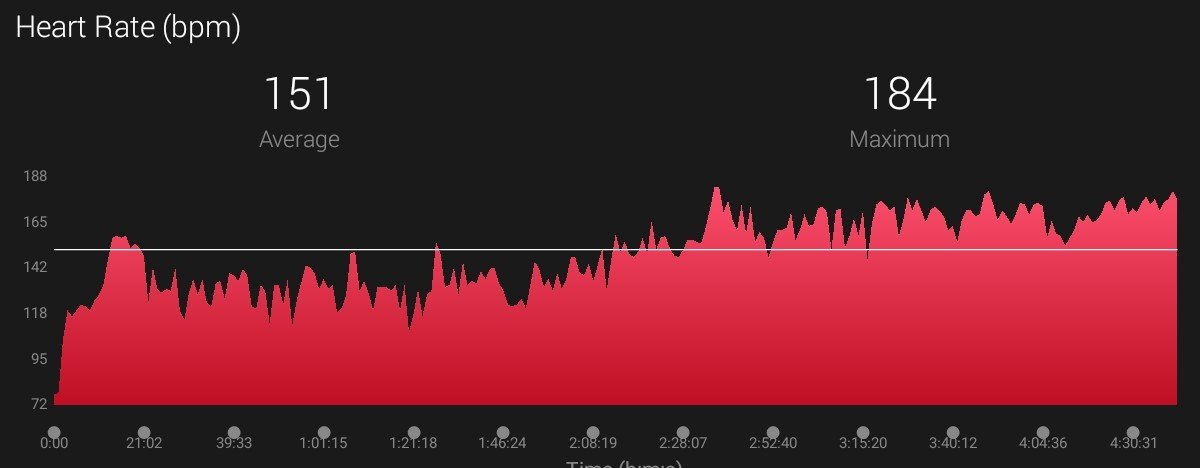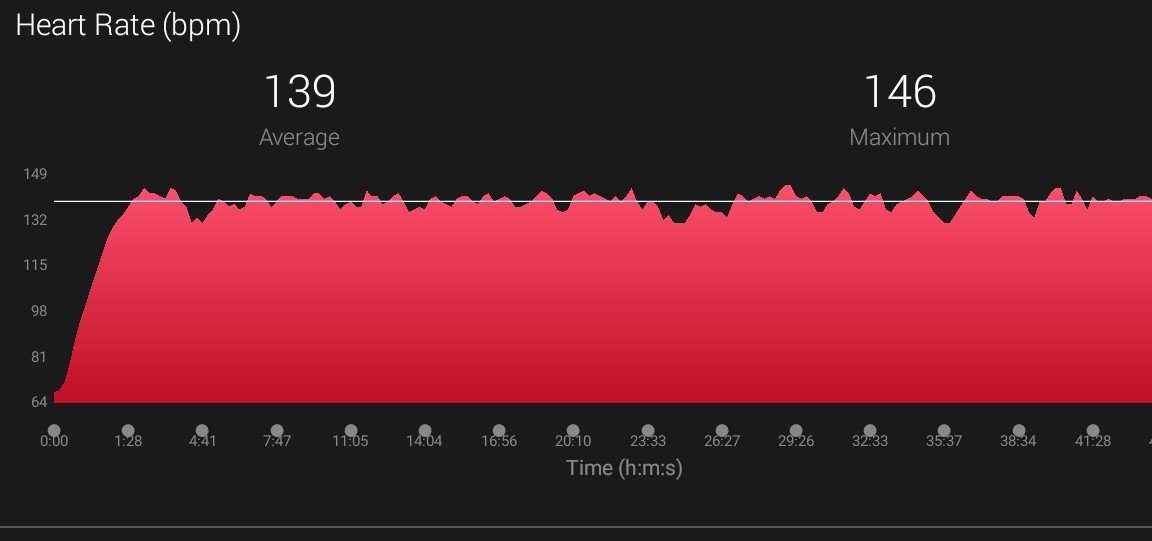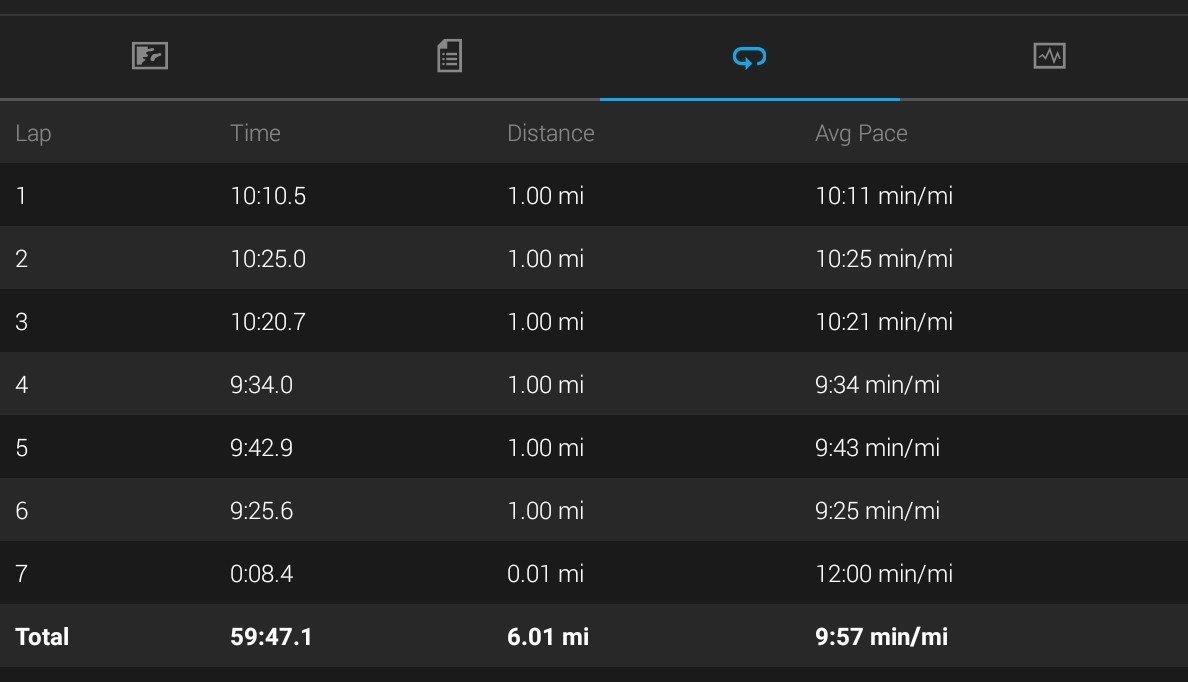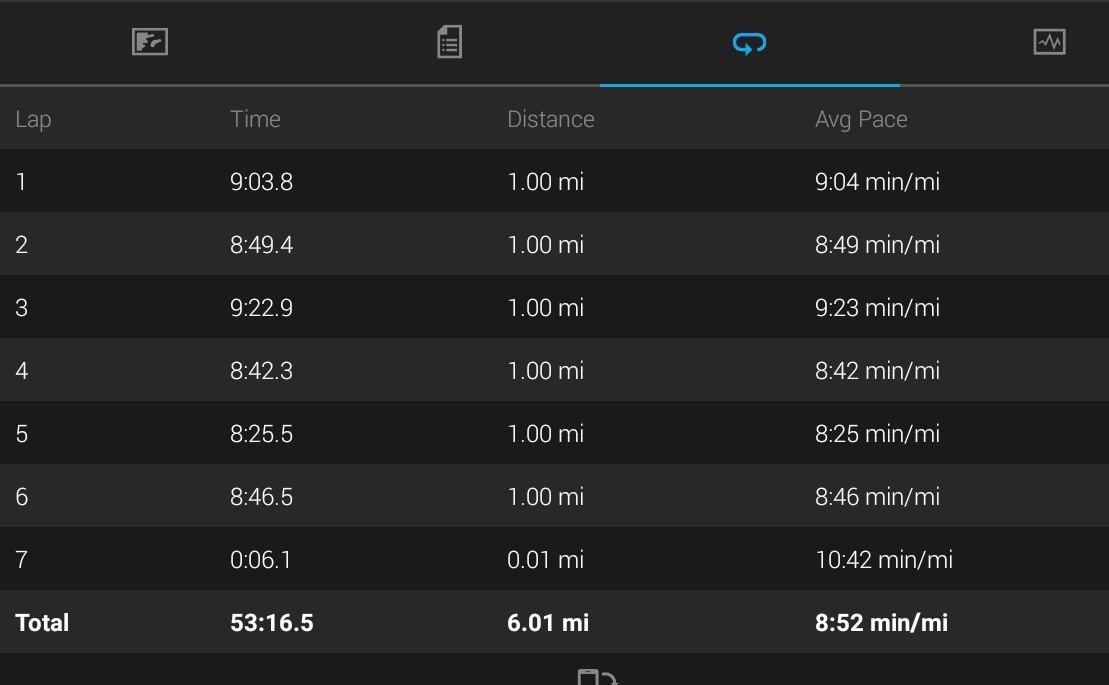Heart Rate Training
Heart Rate Training
This is purely my take on it. If you want science and endless statistics then you best look else where. All I can give is my own experience and believe me, I dont do the science and the endless statistics.
I started HR training on October 1st 2018, so at time of writing that's nearly 10 months. I started serious HR training the same day I started my weight loss program, they both worked. I had flirted with HR before but got bored with it all and preferred to look at pace only. This time though I was determined to give it a proper chance.
Pretty much 100% of all I do is worked out by Sharon, my wife. She is the brains behind all things running as she loves all the science of it, I dont. So the whole HR thing is guided by her.
I did 2 tests, one to find a resting heart rate and secondly my threshold heart rate. The resting HR test being far easier that the high, just wear the HR strap and watch as you sleep one night. The high HR was a run, a fast run. These can be done in various ways but for me it was 30 mins at tempo +, trying to maintain a certain pace for the full 30 minutes. Once both are done you have your resting HR and your high HR.
Lots of people use % max to guide their HR training or use the 220 minus your age method to get a high HR figure but I dont really see the point in doing that. I am using % threshold training ( your threshold changes as you get fitter, your max HR wont ) and I can measure my threshold at regular intervals. Unless your in a controlled situation, wired up with people who know what their doing your never going to get an absolute exact figure for your max HR. Even the way I did it will have factors that can make the outcome vary, as in conditions on the day, how your feeling etc. So just doing the sum 220 minus age seems the most unreliable to me. For me it would give me a high HR of 168, but my actual HR max is 186 so I'd still rather do a proper test.
So, tests done, now what. Feed the two figures into garmin and they then give you 5 zones to work in.
My zones are as follows
Zone 1, 110 - 136 = warm upThis is very ploddy, virtually walking.
Zone 2, 136 - 151 = easyThis is running but not flat out, a HR that can be maintained for ages
Zone 3, 151 - 162 = aerobicYou know your working now, if on the flat, much quicker than Z2.
Zone 4, 162 - 174 = threshold Cant maintain this for long, perfect for intervals but heart busting for longer distance
Zone 5, 174 - 185 = maximum Deaths door.
With this Garmin set up you can use 1 of 3 HR settings.
% of max heart rate.Only uses your max heart rate to work out your zones.
% of lactate threshold This method uses your heart rate at your lactate threshold to work out your zones
% of heart rate reserveIf you know your resting & max heart rates you can calculate your reserve. HR MAX - RESTING HR = RESERVE HR
For me now, I use % of lactate threshold, though for months I was on % HR Reserve.
What's the point of HR training I hear you ask.
Imagine your going to run 10 miles at a pace where you cant hold a proper conversation. Your breathing hard, your working hard. For arguments sake let's say this pace is 9 minute miles. Your trying to do 10 miles while keeping the pace at 9 min miles. Your heart rate is going to rise, that's for sure.
It maybe after 2 miles your HR starts to rise, after 5 miles even more, at 6 miles you've reached your maximum heart rate. Once at your maximum HR, your not going to keep it going. You have to slow down because you can barely breath.

This graph shows the rise in your HR.
The aim of the HR training is to stop that rise and stop maxing out early on in the run. Your not going to eliminate the HR rise, if for instance your going for a 5k PB then by the end of it your going to max out. However if you can train the HR to stop that maxing out early in the run then all the better.
Ideally we want a graph like this

Level throughout the run.
You can easily achieve this level HR if your going slow over the 10 miles but what we want is to go quick over those 10 miles while keeping the HR level and not maxing out.
As I said earlier the decision was made and I started HR training on October 1st 2018.
I think if it's going to be done, then you have to give it 100%, do it religiously and be disciplined.
It's at the beginning most people give in with this type of training, why, because they dont like having to go slow. Can't cope with it apparently. " it's not my natural pace " or " I cant run slow " are things I hear all the time. Well, yes you can, we can all run slow if we want to. I personally think lots of people struggle with posting runs on Strava or wherever that are far slower than their normal runs.
But running much slower is what your going to have to do if you want the benefits of HR training. Like I say, it's really not difficult. If you want to run at 11 minute miles but your watch tells you your doing 9:30, you just slow down and if that feels like your practically walking, then so be it. Its definitely this slowing down that catches lots of people out though.
Once you've done the 2 tests and had your zones worked out, it's off you go. The 1st run of your plan maybe 5 miles in zone 2. You WILL see straight away that this is far slower than what you consider to be a comfortable pace. You WILL think, " there's no way I can do this". You can, it's called discipline.

These stats was from a 6 mile run early in my HR training. 9:57 average pace.
By sticking to the required zone 2 pace throughout the run and it feeling slow should prove to you that your previous comfortable pace is too quick and you wouldn't keep that comfortable pace for long distances. You will eventually max out. So by sticking to the zone 2 as your told to do means 1, you will get through these 6 miles relatively easy and eventually the 6 miles at this comfortable pace will become 10 miles, 15 miles, 20 miles. All at the same heart rate and effort.
Incidentally, it's not difficult to keep at a required HR. If I go out for a zone 2 run, which is 136 - 151 beats per min, i try to keep it mid range, 142. That means you have a bit to play with either side of the 142. The HR is very responsive, any slight incle will make the HR rise, it will rise or fall within steps. So you know on approaching an incline you need to slow down because as we all know, hills have you working harder. You WILL at times have to walk hills to keep your HR down.
Eventually though, after a period of time, 6 weeks or so, see that your pace is now much quicker for the zone 2 running but it's still feeling like a comfortable effort throughout. Things are improving, HR staying low yet pace has increased, happy days.

This picture shows the exact same route as the last picture but pace has improved to 8:52. That's over a minute per mile on the average pace for exactly the same run and same effort, zone 2.
On average now, 10 months after starting HR training my zone 2 runs come out at average paces around 9 min miles. Some days you go out and it can be quicker, some days much slower and you feel like you've never ran before. Lots of things can affect the HR, weather, lack of sleep, busy at work, or lots of miles done in the week. You realise though that when your zone 2 run reverts to a 10:30 average, it's just one of those things, you just have to live with it.
The way zone 2 has gone for you, 10 min miles to 9 min miles would be the same when you do zone 3 work. Though much less of my training is done in zone 3. The majority of HR training is done in the lower zones but you have to also include Z3 & Z4. Zone 4 for me is usually along the lines of an interval session. Z3 being not so comfortable as Z2 but nowhere near flat out. You will also see a big improvement in Z3 miles as you progress with the HR training.
It all boils down to being very disciplined with the donkey work.
Has it worked for me.
When pushing the pace or upping the HR zones I still get that rise in my heart rate. But overall it has improved dramatically. I can run longer distances now in a lower HR than I could before. The paces on a run of the mill 5 or 6 mile training run has improved immensely.
2 months after starting this HR training I got a Marathon PB of 3:48:07, believe me, trying to get back under 4 hours had proved difficult for me. Then came another Marathon at 3:54 and on December the 16th I got a time of 3:43:31. That's 3 sub 4's and 2 PB in the space of 10 weeks. The last PB, the 3:43 is the first time I walked away from a Marathon feeling I'd actually ran it properly.
Last year (2018) I did the Thames Path 100 in 25:33:45, this year I did it in 20:45:46. That's on the exact same route. Though in 2019 I never ran to HR, I hopefully knew enough to go by feel and to try to keep it feeling like I was in a low HR.
Before this years Thames Path I ran the canalathon 100k in 11:18:41, reaching 50 miles in 8:50:14. Which was about 2.5 hours quicker than my previous best 50.
As far as I'm concerned the HR training has been nothing but good for me. The evidence is there for all to see. On Sunday 23rd June I did a very hilly Marathon trying to keep it in Z2, I did that and though very hilly by keeping the HR low it's so much more manageable. For me it has definitely worked.
I must add though, the day I started this HR I also started the weight loss program and that too has been successful, losing 3 stone ish. That weight loss must of helped me and I dont know how successful the running would of been had I just done the HR or weight loss.
* UPDATE*
The decision to run to HR specifically happened whilst I was running the Cumbria Way Ultra in September 2018. On that day I finished with a time of 19:53:13. I really wanted to go back and try it again, in September 2019 I did go back and ran it all to HR, this time I finished with a time of 16:33:50.
I have also ran a few more Marathons since I wrote this piece but two significant ones were 1, in july I got a PB of 3:36. Then 2, 10th Nov I gave another PB attempt and ran 3:31:33. All to HR.
I wasn't planning on this latest attempt but for 3 weeks prior to it the pace for my low Zone 2 just got so much quicker. So I thought why not. It was hard work but more proof that the HR training does work.

